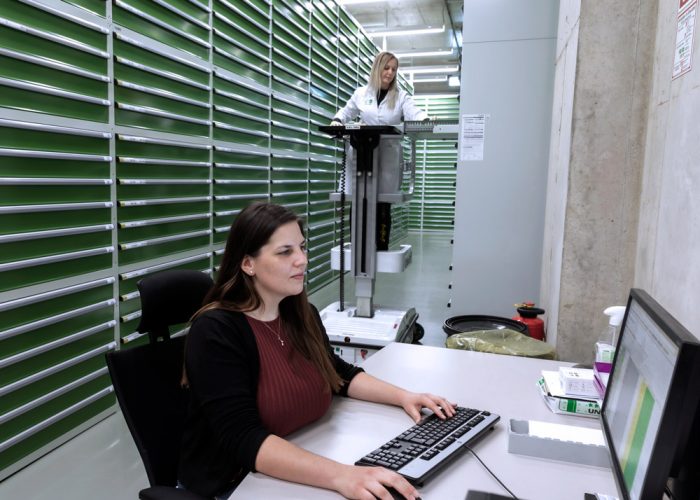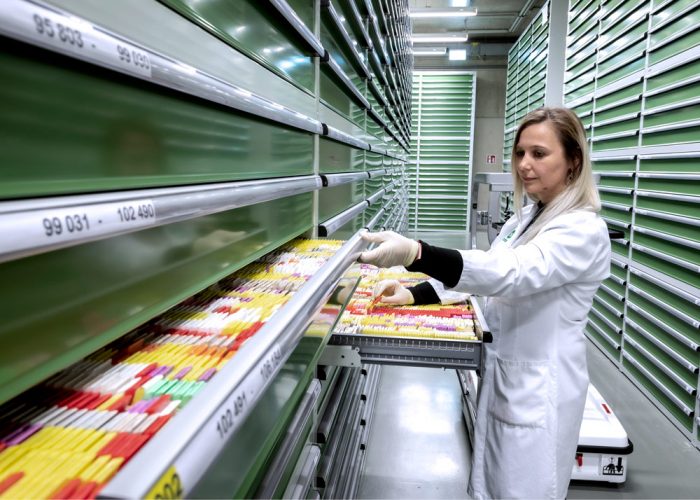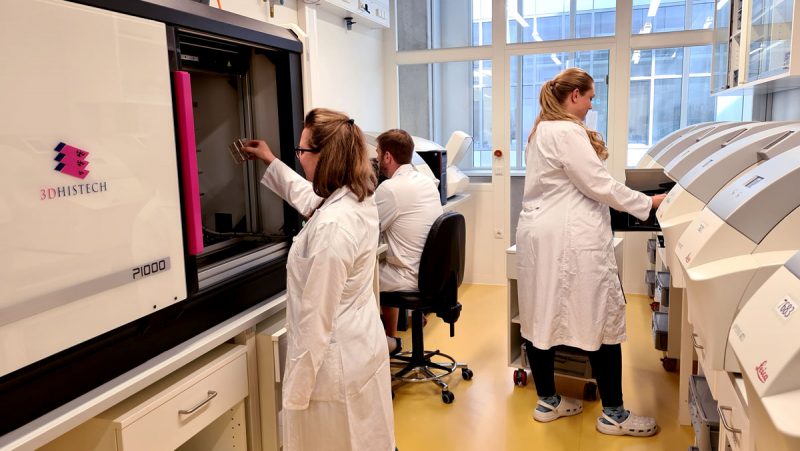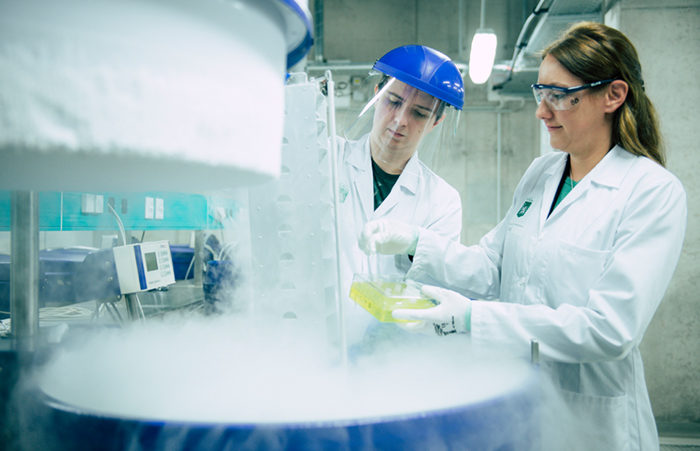
Employees
Research field/Range of products
Biobank Graz collects and stores human biological material (body fluids & tissues) and associated pseudonymised clinical data according to a standard of ISO 9001:2015. Both are made available to internal and external research partners in compliance with ethical and legal requirements.
Research cooperation


+43 (0)316/385-72716 | www.meduni-graz.at/biobank
Digitalisierte Biobank-Proben helfen bei der Krebsdiagnostik
Der Standard hat über das Digitalisierungsprojekt im ZWT berichtet, durch das sich völlig neue Methoden in der Diagnostik von Erkrankungen ergeben.
Weitaus mehr als „nur“ Proben digitalisieren
Biobank-Proben enthalten wertvolle Informationen für die Diagnostik und Therapie verschiedener Krankheiten. Ihre Digitalisierung führt zu einer systematischen Erfassung und eröffnet damit völlig neue Möglichkeiten. Rund eine halbe Million Proben der Biobank der Med Uni Graz wurden im ZWT bereits digitalisiert. Dies erfolgte mit weltweit einzigartigen Scannern und in Kooperation mit internationalen IT-Unternehmen.
Mit Sicherheit gut vernetzt
Mehrmals täglich ist Pathologe Stephan Jahn für die Biobank der Med Uni Graz im ZWT im Einsatz, um für die fachgerechte Probenentnahme zu sorgen. Die enge Vernetzung zwischen den Pathologen und der Biobank Graz ist essentiell, um Probenqualität und Patientensicherheit auf höchstem Standard zu garantieren. Doch wie konkret läuft das in der Praxis ab?
![[EN] ZWT Graz](https://en.zwt-graz.at/wp-content/uploads/sites/2/2021/07/ZWT-Manual_EN-01_web.png)


